Living eco-friendly and encouraging sustainable way of lifestyle is a growing trend now. It is the need of the hour also, and can easily be incorporated in our homes provided you are aware of the green components possible to implement. Sustainability is all about reducing the carbon footprint. This can be achieved in a few simple and straightforward ways. Knowledge about the clues to use nature at your advantage along with a green house plan supported by an engineer’s design is all you need to make a space green and energy efficient.
When we consider the construction of a green building, sustainable building material will help you to achieve three broad goals, which are narrated here:
- A reduce on limited natural resources from the environment during their life cycle.
- Increase the built environments’ energy efficiency and energy performance.
- Impacting lesser harm to the environment and the occupant’s health.
A building needs more than 100 materials. However, flooring is a major one, both from mass aesthetics and cost point of view. Thinking about what to use for your floors or what to replace them with, is undoubtedly an important factor as it’s not something you’ll be doing regularly. So, when you are thinking about sustainable flooring, you need to consider the best types of flooring materials available and suitability of the best options, which you can safely use in your home with the best ROI.
So before you go ahead, you need to know about why sustainable flooring is different from other flooring options.
How Sustainable Flooring is Different from the Conventional Flooring?
The most obvious reason to choose sustainable flooring or eco-friendly flooring is environmental conservation. It improves indoor air quality and minimizes health risk by using natural materials that don’t require as many chemicals or synthetics during production and it keep the release of Volatile organic compounds (VOCs) low. Eco-friendly flooring generally cost more than conventional ones. However, the long-term savings can outweigh the initial cost.
Some of the Green and sustainable flooring materials are mentioned below:
01. Cork – An Eco-Friendly Flooring
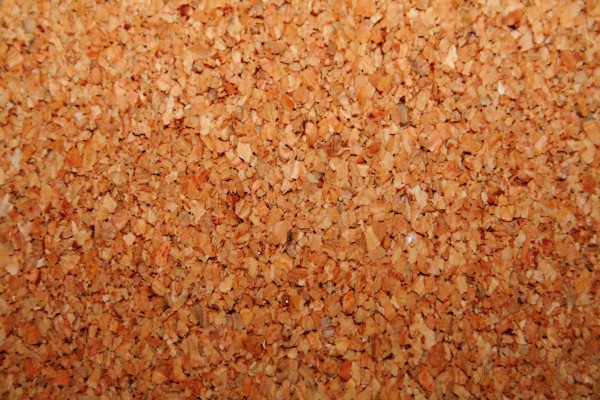
Cork is a 100% natural material for green flooring. It is made from 100% recyclable material from the production of wine cork stoppers. The waste produced from the making of cork stoppers is recycled to produce the beautiful flooring tiles. There is a vast array of colour choices, patterns textures which offer infinite possibilities for the sustainable flooring for your home. According to the ‘National Renewable Energy Laboratory (NREL)’, producing each unit of flooring product generates about 1kg of waste, 94% of which is used to produce energy and 3% of which is recycled.
The material comes from the cork oak tree, and it is actually the bark of the trees that is harvested. They can be harvested in every nine to eleven years without damaging the overall health of the tree or the lifespan of the tree.
Not a single tree demolition is involved in the making of cork flooring. The actual process of harvesting involves carefully harvesting the bark of the cork oak tree. Thereafter, the bark regenerates and rejuvenates itself. The bark is harvested in 9-year cycle throughout the entire lifespan of that tree, which can run up to 250 years. So basically, no tree is destroyed.
Cork flooring is available in the range of 4 to 12 mm thickness. Residential cork flooring has approximately 4 to 8 mm thickness. Mostly thicker tiles are used in commercial application.
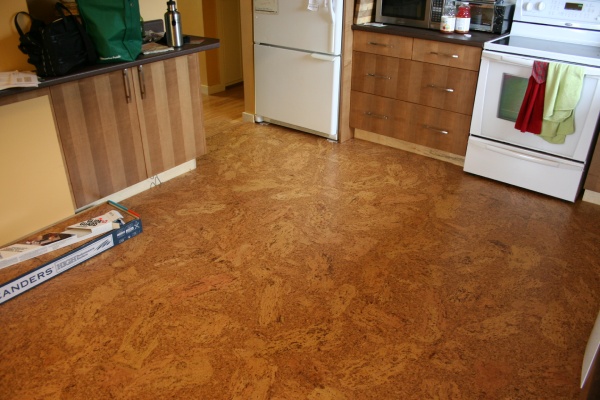
Why use Cork Flooring?
Cork flooring is the appropriate flooring for one who is looking for beauty, comfort, durability and sustainability in the flooring. The floor offers versatility, smart-look, and is comfortable, pliable, and soft. Apart from this, its insulation, sound absorbing quality, and water resistant nature deserve special mention.
Advantages of Cork Flooring
01. Light and Soft Surface:
One of the best qualities of cork is its softness and feeling of yield when you step on it. Cork is a softer wood in comparison to the other hardwoods. It is neither wood nor vinyl, henceforth it will keep you delighted with its texture and feels. The air within the cork cells gives it the ability to get compressed. Thus you will get a noticeable cushiony effect.

This type of flooring is the most popular in rooms where you will spend your time for long hours, standing such as in the kitchen. Cork flooring is also quite suitable for kid’s room or rooms for elderly people as it provides a cushiony surface against tripping and falling.
Cork is lighter due to its very cellular makeup. Similar to a honeycomb, cork traps more than 50% air within its cells so it obtains some impressive abilities.
02. Cork Flooring is Environment-Friendly:
No trees are harmed during the manufacturing process of cork floors. For making cork productive, trees are not cut, but rather the exterior bark is all harvested. Harvesting these trees prolongs the life of the trees and forests to live over 200 years of age. From the exterior of the bark, tiny granules are chopped up. Using these tiny granules, they are processed into cork planks. Cork flooring is thus biodegradable.
03. Water Resistant:
Most hardwoods are poor at moisture resistance, but cork rates higher with suberin. Suberin is a waxy substance that is generated within cork itself. Natural to cork, this substance prevents liquid invasion.
04. Cork Floor has Good Insulation for Heat:
A cork floor is naturally warm to the touch. This same cell structure gives cork the ability to inhibit the transfer of heat or cold and sound. If it is cold outside, with a cork barrier, you get less invasion of unwanted climes and more retention of the ambient temperatures you want. That allows for a warmer contact surface, warm enough that a cold winter mornings will not freeze bare feet on a cork floor.
05. Easy to Install and Maintain:
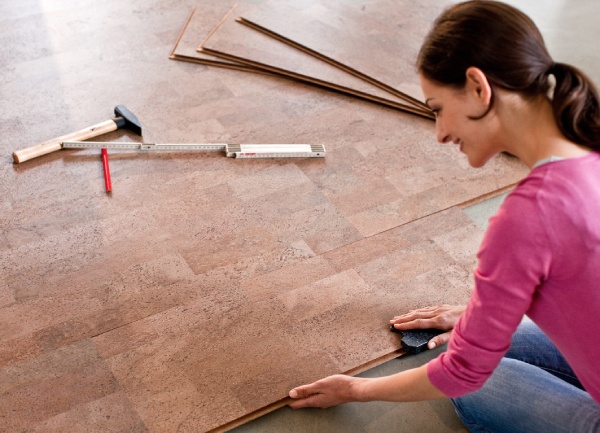
Cork flooring is DIY friendly. Hence, it is easy and simple to install cork flooring with just a few simple steps to follow. Unlike, carpet and other flooring materials, cork flooring resist dust and other unwanted particles from its surface. Thus, it is hypoallergenic in nature.
Disadvantages of Cork Flooring
01. Susceptible to Scratch and Damage:

Since cork flooring is soft, it tends to incur damage in the form of scratches and dents. These damages can occur due to dragging of furniture, sharp heels, and pet animal nails. Although, damaged cork can be repaired, it is the best to consider the traffic pattern of your household beforehand.
02. Tends to Fade:
If the cork flooring is installed at a place where the floor is exposed to sunlight, you are likely to experience colour fading as the result of sunlight.
02. Linoleum – Sustainable Flooring

Linoleum is manufactured from renewable resources, like raw and natural ingredients that include linseed oil, limestone, wood or cork powder and resins. It makes a durable floor and is long-lasting, naturally biodegradable. It comes in a variety of colors and styles. However, linoleum has to be sealed every year. Linoleum flooring comes in the range 2 to 6 mm thickness.
Why to use Linoleum Flooring?
Linoleum is a good option for flooring material if you are looking for an option that is durable and inexpensive. It has three great features:
- It is made from natural materials, hence it is eco-friendly.
- It is anti-microbial, which means the spores won’t be attaching themselves to your floors.
- It has anti-static properties, so you won’t be distressing your pet.
Advantages of Linoleum Flooring
- Although linoleum sheets can be difficult to work with, it is pretty easy to install linoleum tiles and planks.
- Linoleum flooring is water resistant. It just needs to be sealed periodically.
- They are biodegradable.
- Linoleum tiles are colourfast, which means that the patterns are not just printed on the surface but they are present throughout the tiles, i.e. full body.
- It is maintenance-friendly. Stains can easily be removed manually using a mild detergent.
Disadvantages of Linoleum Flooring
- It is expensive in comparison to the other flooring types.
- It starts showing a yellow tinge on the surface of certain linoleum tiles. This discoloration is temporary although and it also disappears after its exposure to sunlight.
- You may require a professional help for its installation.
03. Bamboo – A Green Flooring Option

Bamboo is a fast-growing grass and is a renewable resource. It is not a tree that comes from managed forests and plantations.
Why use Bamboo Flooring?
Bamboo flooring is incredibly strong and easy to install. They are great for nearly any application – indoor or outdoor. The key to bamboo flooring is the bamboo skin, which provides incomparable strength, weather resistance, and natural appearance. Bamboo tiles are termite, fungus and water resistant. It makes a good eco-friendly flooring. Bamboo flooring comes in the range of 12 to 15mm thickness.
Advantages of Bamboo Flooring
01. Bamboo is a Renewable Resource:
Bamboo takes approximately 3-5 years to mature. Henceforth, bamboo is more sustainable and environment-friendly solution in comparison to the other slow-growing hardwoods. Additionally, Bamboo can be harvested in every 5 to 7 years.
02. Bamboo Floor is Durable:
For flooring, bamboo is usually harvested till its maturity to ensure hardness and resilience. If you use the top quality product, and if it gets installed properly, bamboo flooring can give good service over many years.
03. Low Maintenance:
The hard surface of bamboo makes it easy to keep the surface clean. Some manufacturers suggest a damp cloth with a weak white vinegar water solution for the cleaning. Bamboo flooring does not require waxing and no furniture duster sprays should be used.
04. Bamboo Planks are Budget-Friendly:
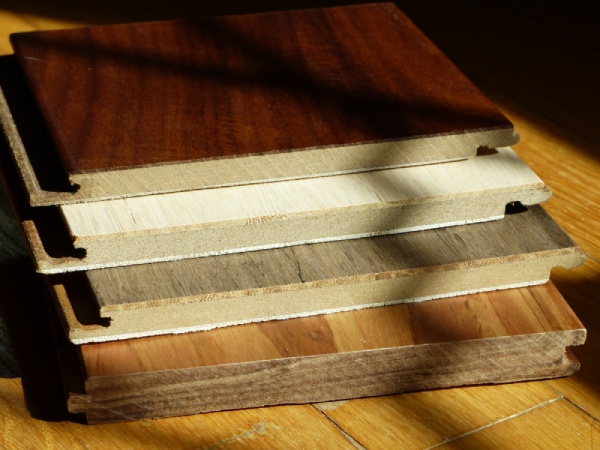
These eco-friendly floors not only come at a much lower environmental price, but also are very easy on your pocket. Bamboo flooring costs lesser as compared to the other hardwood flooring.
05. Easy Installation:
Some bamboo floors need to be nailed or glued down. But otherwise the installation process is DIY friendly.
Disadvantages of Bamboo Flooring
01. Hardness:
Carbonized bamboo planks give you the richest and deepest shades. However, as a result of the heating process these planks undergo, they get softer in comparison to the other types of bamboo. You may find that they are more likely to dent or scratch. You can counteract this effect by opting for strand woven carbonized planks.
02. Moisture:
Bamboo flooring is not suitable for use in humid areas such as bathrooms and basements.
03. Bamboo Floor Tends to Get Chipped:
Some bamboo floors are more likely to chip or show other surface damages. This can be prevented by using precautionary measures such as doormats to catch grit or felt pads under furniture legs.
04. Emission of VOC and Formaldehyde:
If any Volatile organic compound (VOCs) is used during the manufacturing of bamboo planks, it can cause health hazards for the users.
04. Luxury Vinyl Tile – An Eco-Friendly Flooring
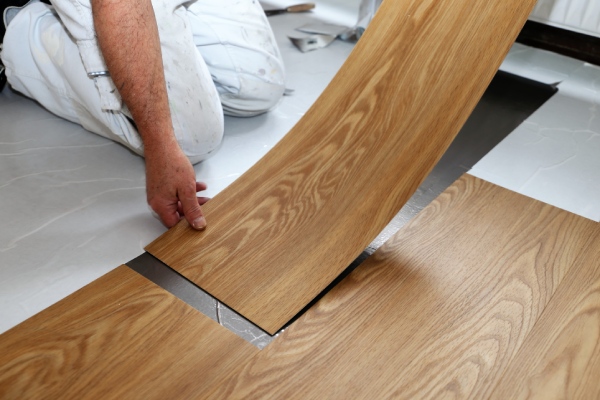
Luxury Vinyl tile or LVT is the tile that can run across the main floor and have the characteristics of a concrete floor. It has the warmth and sound absorption quality of a carpet. Luxury vinyl tile is environment friendly because of the cork backing. LVT is a flooring option that has the natural look of stone, wood, or ceramic flooring with the resilience and durability of a hard-wearing vinyl floor.
Why Use Luxury Vinyl Tile (LVT) Flooring?
Luxury vinyl tiles are one of the fastest growing categories in sustainable flooring options. This tile also has low VOCs. LVT is durable and ideal for families with kids and pets. Additionally, it also adds durability with a high performance wear layer for superior durability. It is ideal for high residential traffic as well as for other areas of the home. Also, it comes in a wide range of sizes and shapes. Luxury vinyl flooring comes in the range of 2 to 8 mm thickness.
Advantages of Luxury Vinyl Flooring
01. Nearly Waterproof:
Since luxury vinyl tile is composed of multiple layers, which also include a thick layer of urethane, it empowers the tile to offer multiple benefits to the users. One such benefit is water resistance. Although this property of luxury vinyl tile is very important for bathrooms and kitchen, it also adds value in other areas of the building as well such as, basement and laundry rooms. Water resistance of this tile also makes the cleaning very easy.
02. Easy to Install:

Luxury vinyl tiles are fairly easy to install. They can either be glued down or fixed by using grout. It also has the added benefit of being installed on almost any surface. The installation of luxury vinyl tiles is DIY friendly.
03. Cost Efficient:
Luxury vinyl tiles only mimic the hardwood. Henceforth, it costs lesser in comparison to the actual hardwood.
04. Visually Appealing:
These tiles are designed in such a way that they practically look identical to the material that it is meant to look like. Luxury vinyl flooring is basically created to look like the mimic material of wood, tile or stone flooring. Additionally, there are a number of designs to choose from. This way you can easily give your home the authentic look of hardwood, but at a lower cost with the help of luxury vinyl.
05. Scratch Resistant:
These tiles are scratch resistant as well as stain-resistant. This resistance property of luxury vinyl tile makes it durable enough. These tiles last longer i.e. approximately about 25 to 30 years as per flooring professionals.
Disadvantages of Luxury Vinyl Flooring
01. LVT is Not Recyclable:
Luxury vinyl tiles are non-recyclable. When it reaches the end of its service life, it has to be removed and discarded in a landfill.
02. Health Risk:
Luxury vinyl flooring may emit some hazardous chemicals such as formaldehyde and VOCs, which are proven to be a risk for our health. These chemicals are emitted for several weeks after the installation process.
03. Not Impervious to Damage:
Although luxury vinyl tiles are more durable in comparison to the natural hardwood, it is not completely immune to damage. It is not repairable. Additionally, it fades when it is exposed to direct sunlight.
To know more about vinyl flooring, read
Conclusion
When we think about green building, we don’t normally think of the floors. There are flooring materials that can contribute to the green functioning of a home. Sustainable flooring material not only saves your money in the long run, it also helps in saving the environment. There is no single factor that can straightway determine whether a floor covering is green or not. There are a variety of considerations. Hence, green flooring material can be thought as a product that utilizes recyclable or renewable materials for energy resources. The flooring options described here adhere to the green benchmark successfully.
You may also like to read our other articles related to Sustainable Materials:
8 Eco Friendly Building Materials Utilised in Green/Sustainable Buildings!
7 Kid Friendly Flooring Options: A Guide For Parents!
Recycled Glass as a Sustainable Interior Design Material!
Image Courtesy – Image 10, Image 11
Author Bio
Arfa Falak – My name is Arfa Falak and I have my graduation in BE (civil). I live in Bangalore. I am an aspiring design Engineer.

